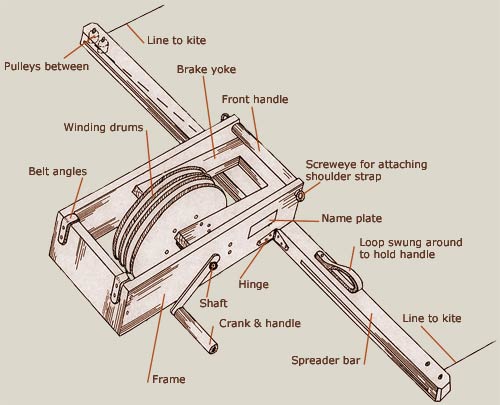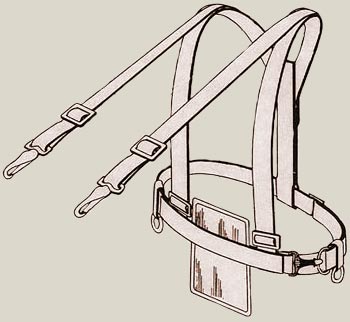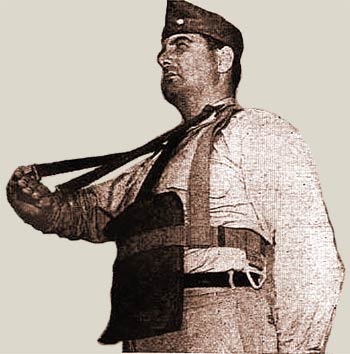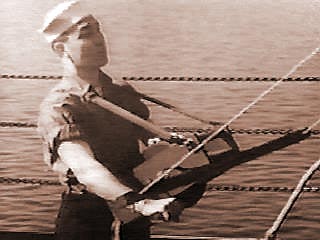| Target
Kite Mk.1,2 Extract of Manual : Equipment |
GENERAL DESCRIPTION | |
| MANOEUVRES |
| Wokipi-Kite |
|
THE
REEL
|
 |
It has four functions: 1. Winding and unwinding the lines; 2. Adjusting the two lines to equal lengths; 3. Spreading the lines apart to facilitate control; 4. Braking the motion of the kite. The winding assembly comprises a crank and handle which turn a shaft upon which the two winding drums are mounted. Each drum has a ratchet at its center. When the handle is turned forward, the ratchets catch and both are turned together. Turned in the opposite direction, the ratchets slip and either drum may be backed up independently. This ratchet device is used only for evening the lines, not for maneuvering the kite. From the reels the two lines go forward to the center of the spreader bar, where they pass around pulleys and out spanwise to the ends of the bar, where there are other pulleys between which the lines go outward to the kite. On the main shaft are two brake hubs. Upon these, the brake-lever can be pressed to slow down the outgoing speed of the lines. The left hand operates this brake. The brake is always used to stop or slow down an outgoing kite. Don't make the mistake of trying to catch the rapidly revolving crank handle. |
| Servicing
the Reel The ratchets are oiled at the factory. Heavy grease should not be used; it tends to restrict the pawl-pins or rollers and may make the ratchets slip. A drop of oil should occasionally be put on side bearings, handle shaft and pulley axles. If brake-leathers get too smooth, powdered resin will improve their grip. |
|
HARNESS
|
| Although
the straps furnished with the reels are adequate for supporting it
when used with the operator's own belt, some may prefer a more complete
rig. The drawing shows several useful features. It includes not only belt and shoulder straps, but also front straps better to support the reel, quick-release buckle, apron to protect the clothing and in which there are openings for the angle irons, rings to which safety lines can be fastened when flying the kites from aboard ship or a jeep, and a pocket for stowage of spare parts and tools. rechange et des outils. |
 |
 |
|
|
|
THE
FLYING LINES
|
 |
It
may be necessary to renew flying lines cut by bullets or broken when
the kite is shot down. Use a slip knot to attach lines to drums. To
join a severed line, the fisherman's knot
is recommended. Any knot weakens the line from its original strength of about 70 pounds to about half. All knots should be tied small and pulled tight so they will pass easily around the pulleys. The flying lines are small diameter to reduce wind resistance. The weight of the 400 yards is about 4/5 of a pound. The material is linen or linen hemp, which has less stretch than cotton. Extra line can be obtained from Navy stores by specifying USNAF Cat. No. R-27-T-2707-20. It is similar to that used for sewing airplane wings. It comes in pound tubes, each containing about 500 yards. |